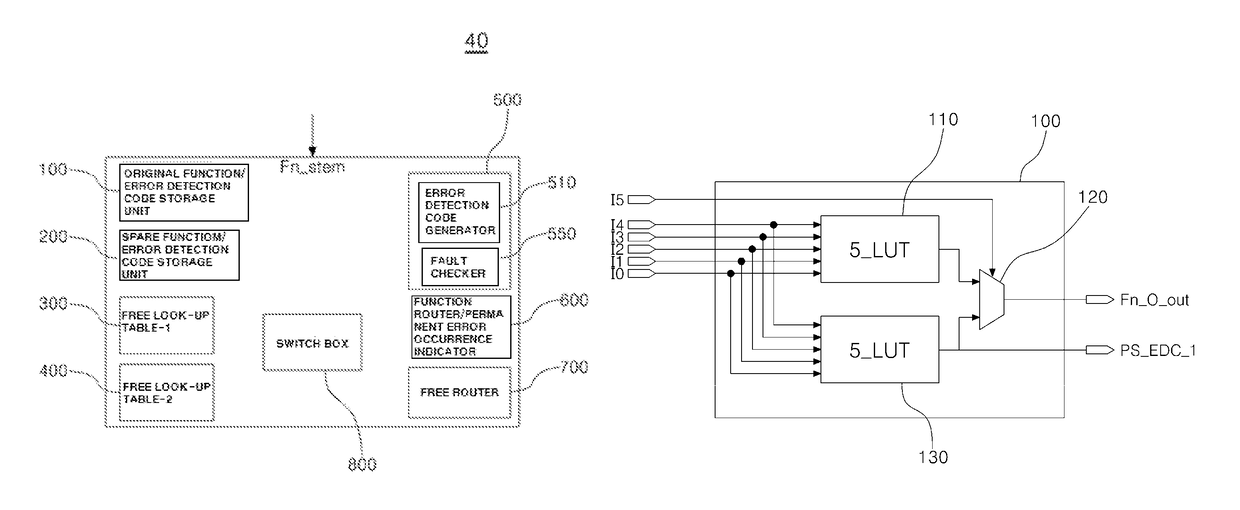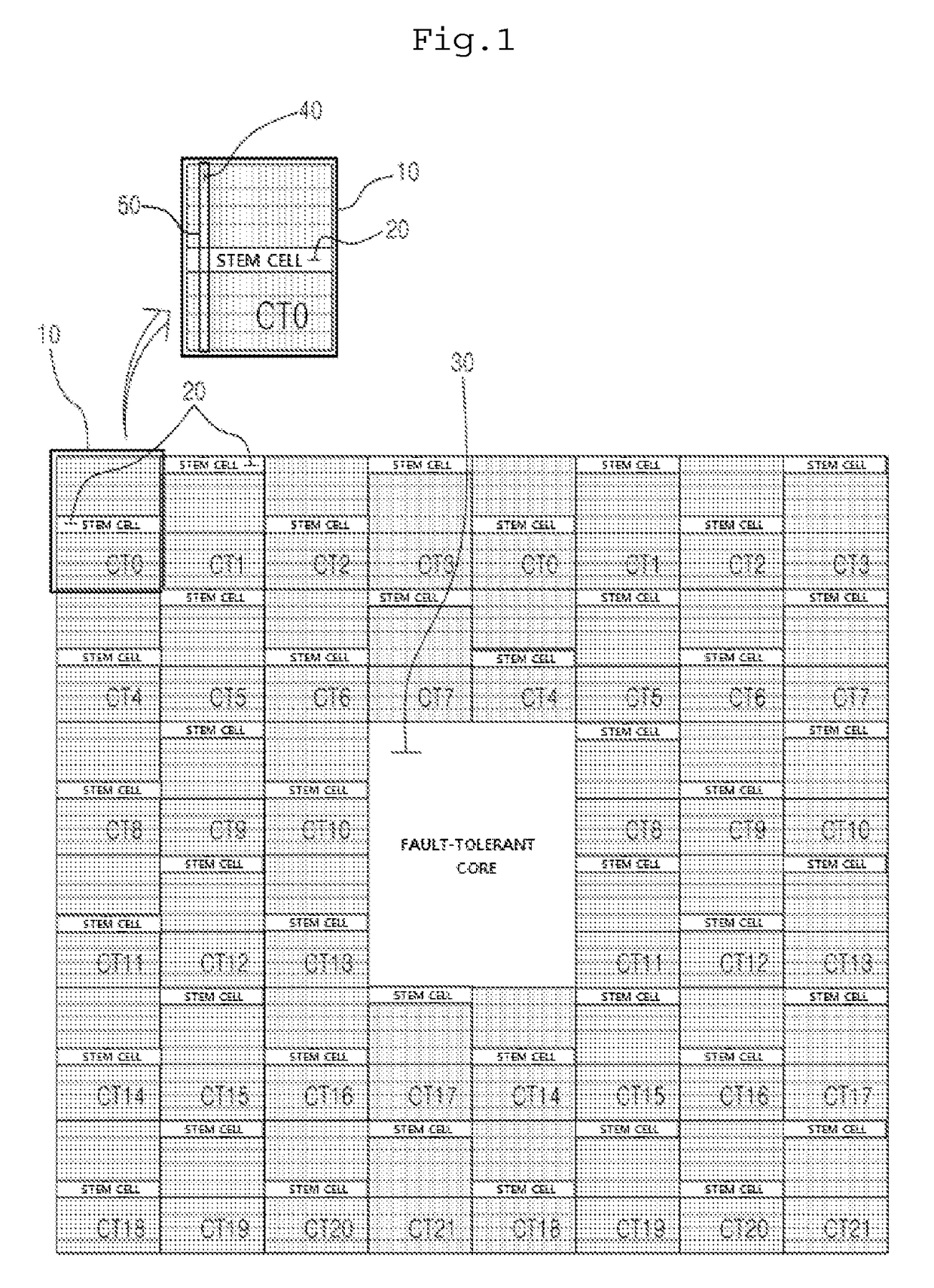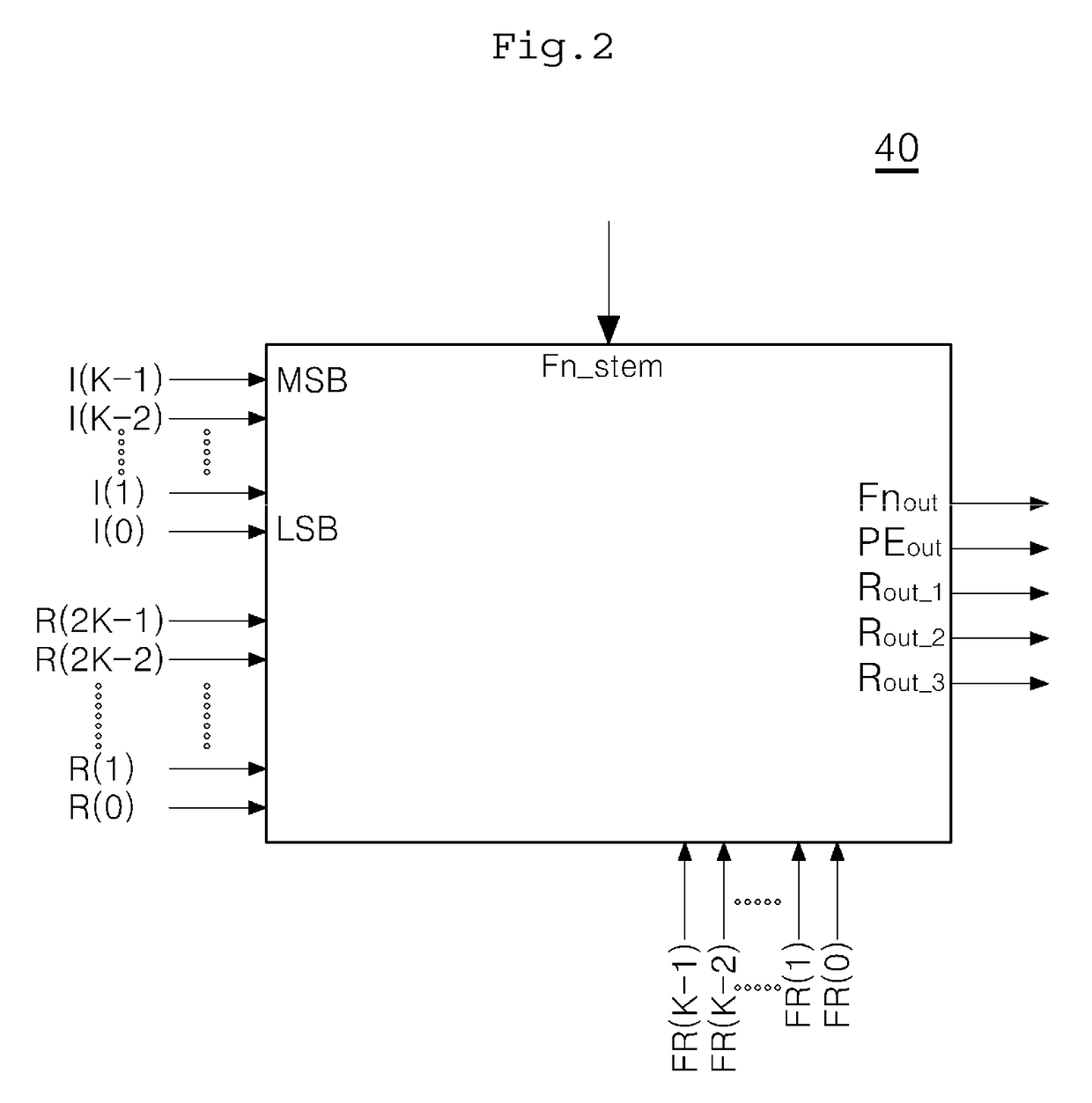Self-healing, fault-tolerant FPGA computation and architecture
a fault-tolerant, computation cell technology, applied in the direction of fault response, pulse technique, instruments, etc., can solve the problems of transient faults or stuck faults, stuck faults may appear as permanent defects, and faults in fpga systems. achieve the effect of improving efficiency and improving efficiency
- Summary
- Abstract
- Description
- Claims
- Application Information
AI Technical Summary
Benefits of technology
Problems solved by technology
Method used
Image
Examples
Embodiment Construction
[0037]Hereinafter, the description of the present invention made with reference to the attached drawings is not limited to specific embodiments, various modifications may be applied to the present invention, and various embodiments may be implemented. Further, details in the following description should be understood to include all modifications, equivalents, or substitutions included in the spirit and scope of the present invention.
[0038]In the following description, the terms such as “first” and “second” may be used to describe various components, but the meaning of those components should not be limited by the terms. The terms are merely used to distinguish one component from other components.
[0039]The same reference numerals are used throughout the different drawings to designate the same components.
[0040]A singular expression used in the present invention includes a plural expression unless a description to the contrary is specifically pointed out in context. Further, in the pr...
PUM
 Login to View More
Login to View More Abstract
Description
Claims
Application Information
 Login to View More
Login to View More - R&D
- Intellectual Property
- Life Sciences
- Materials
- Tech Scout
- Unparalleled Data Quality
- Higher Quality Content
- 60% Fewer Hallucinations
Browse by: Latest US Patents, China's latest patents, Technical Efficacy Thesaurus, Application Domain, Technology Topic, Popular Technical Reports.
© 2025 PatSnap. All rights reserved.Legal|Privacy policy|Modern Slavery Act Transparency Statement|Sitemap|About US| Contact US: help@patsnap.com



